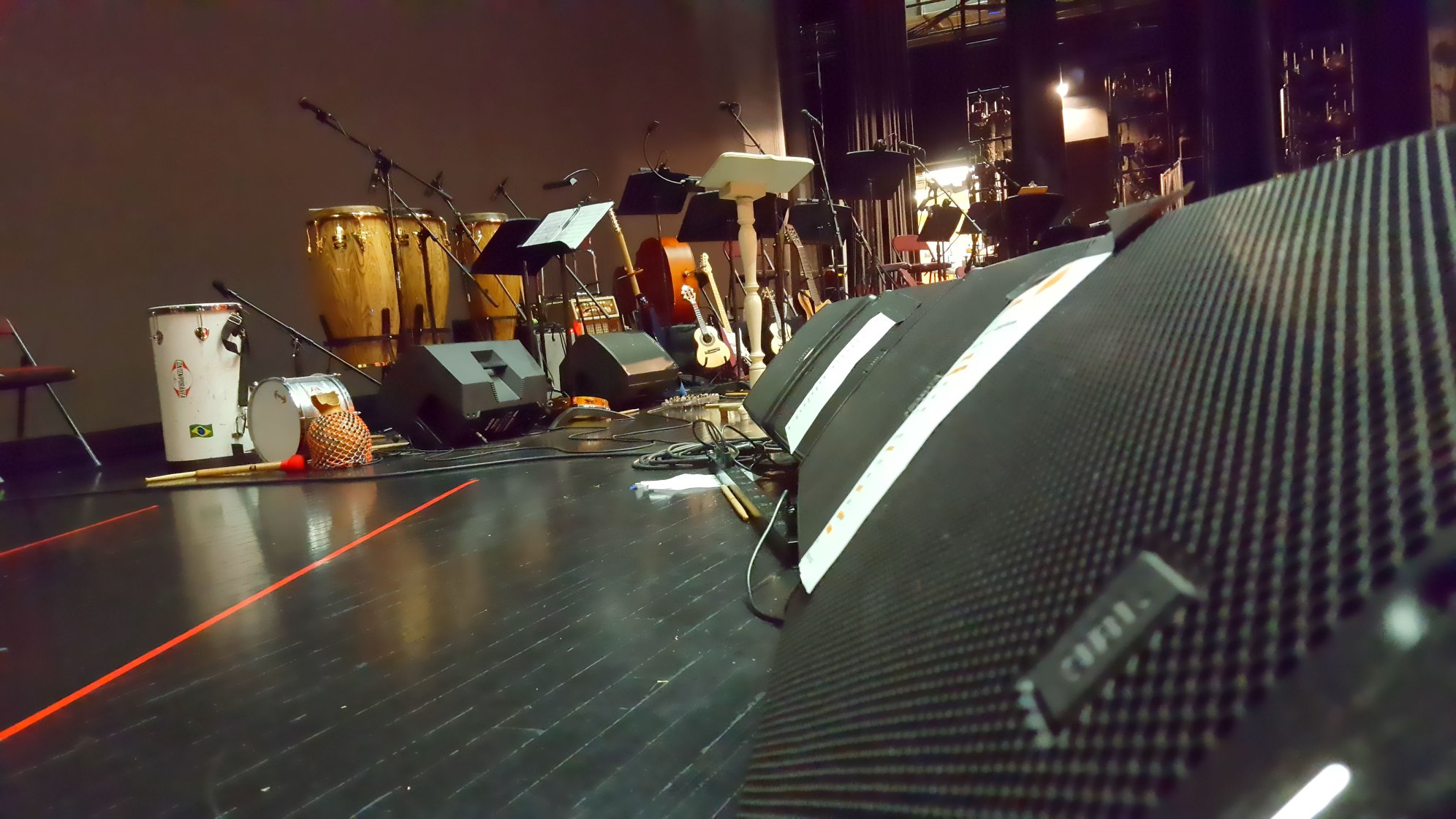Sleuthing may save you from unnecessary repair and replacement.
Please Remember:
The opinions expressed are mine only. These opinions do not necessarily reflect anybody else’s opinions. I do not own, operate, manage, or represent any band, venue, or company that I talk about, unless explicitly noted.

 Want to use this image for something else? Great! Click it for the link to a high-res or resolution-independent version.
Want to use this image for something else? Great! Click it for the link to a high-res or resolution-independent version.It was night two out of three with Samba Fogo, an epic-level Brazilian music and dance extravaganza. I had walked down to the deck to run my nightly shutdown when Francisco mentioned a serious problem: We had wrecked a DBR12 monitor wedge. Soon after the monitor mix had included percussion, the box had started to make a horrible crackling noise. Francisco said it sounded like we’d killed the HF driver.
Dangit!
I wanted to hear the problem for myself, so I opened monitor world’s channels and started talking into a mic. Everything seemed fine at first, but then – ah! – there it was. Something was definitely wrong. I decided to sweep a tone through the box to figure out where the compression driver had de-spec’d.
And that’s when I started to get a tiny bit suspicious.
I tried tones from 1 kHz all the way up to 8k, and the playback from the DBR was as clean and clear as you please. If we’d blown up that tweeter (which should be hard to do anyway), why was it sounding like it was just fine?
I went back to the mic and noticed something curious. The problem seemed to correlate with my saying “two” during “Check, test, one, two.” That’s low-frequency information. I rolled the high-pass up on the channel…and the problem disappeared. Had the LF driver been ruined?
Dangit!
I wanted to do more diagnosis, but it was late, so out the door I went.
I arrived early the next day with my drill. I needed to get the grill off the Yamaha so I could test the woofer cone. My guess was that the coil was no longer centered in the gap, and sufficient excursion caused rubbing that was very audible. (This wasn’t totally reasonable, now that I think about it some more. If the coil really wasn’t centered, I should have heard nasty grinding all the time. Even so…)
The grill being removed, I applied pressure to the driver diaphragm, certain I was about to hear and feel a coil rubbing against a magnet.
Nothin’. It was smooth as a fighter jet made entirely of unsalted butter.
I got the tone-generator going again, and the problem came back with a vengeance. Maybe something had come loose on the input board? I plugged the signal cable into a different box – and the new box made exactly the same noise.
Ah-ha! It had to be something else, because the problem was now common across two completely different wedges. I walked around the upstage riser to get to my mix racks and snake heads, and that’s when it happened. The crackling tracked perfectly with my footsteps on the stage. I stomped a foot a few times. Exact correlation.
A loose connection was masquerading as a driver failure!
I poked and prodded at my main stagebox. No problem. I tweaked the drop snakes. No problem. I started jiggering the “last mile” connections to the monitors and –
Bang! There it was. one of my “not that great” 50-foot XLRs wasn’t quite mating with the stagebox correctly. So I swapped out the cable.
And our blown monitor wasn’t blown anymore. As near as I can tell, we finally got enough vibration happening on the stage such that the connection partially let go after being properly seated for a couple of days.
The moral of the story is, if something seems busted, try to track down the “why.” Work through as many different failure causes as you can think of. You may find out that some other, much less expensive thing is what’s causing your problem.